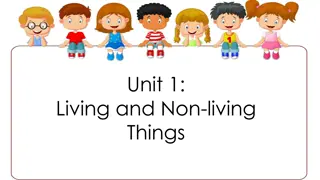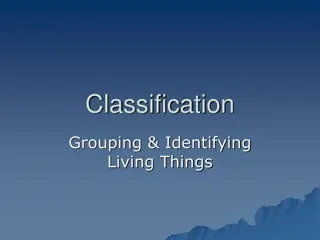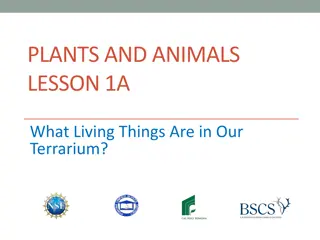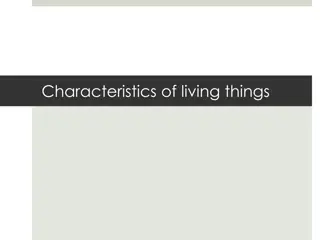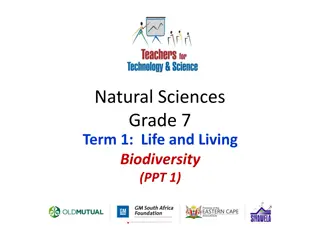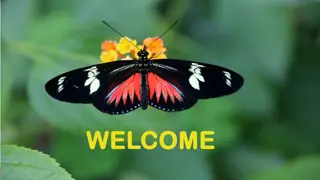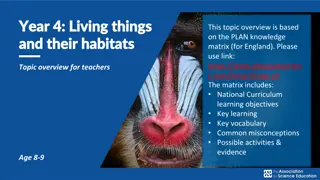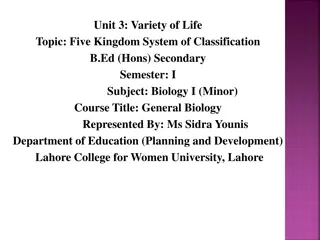Understanding Living Things: An Overview of Classification
Living things share common characteristics like being made of cells, responding to the environment, and reproducing. Macromolecules in cells help them function, and unicellular and multicellular organisms differ in structure. The levels of organization in multicellular organisms are explained, along with details on reproduction and autotrophs.
Download Presentation

Please find below an Image/Link to download the presentation.
The content on the website is provided AS IS for your information and personal use only. It may not be sold, licensed, or shared on other websites without obtaining consent from the author. Download presentation by click this link. If you encounter any issues during the download, it is possible that the publisher has removed the file from their server.
E N D
Presentation Transcript
Lesson 1: Classifying Living Things
A. What are living things? 1. All living things have some characteristics in common. a. They are made of cells. b. They are organized into different structures. c. They grow and develop.
d. They respond to their environment. e. They reproduce, or form new organisms. f. They use energy.
2. Macromolecules in cells are organized into different structures that help cells function. 3. The four types of macromolecules in cells are nucleic acids, lipids, proteins, and carbohydrates.
4. Unicellular organisms are made up of only one cell. 5. Multicellular organisms have different types of cells that carry out specialized functions.
6. The different levels of organization in multicellular organisms are: cell, tissue, organ, and organ system. 7. Living things grow, or increase in size, during their lifetimes.
8. Adult organisms form new organisms by reproducing asexually or sexually. a. Bacteria and other unicellular organisms reproduce asexually when one cell divides and forms two new organisms. b. Sexual reproduction occurs when the reproductive cells of one or two parent organisms join and form a new organism. c. Humans and other multicellular organisms reproduce sexually.
9. Autotrophs are organisms that convert light energy into usable energy. a. Many autotrophs use energy from light to convert carbon dioxide and water into carbohydrates, or sugars. b. Organisms that grow on energy released by chemical reactions of inorganic substances such as sulfur and ammonia are called chemoautotrophs.
10. Organisms that obtain energy from other organisms are called heterotrophs; they eat autotrophs or other heterotrophs. 11. Organisms respond and adapt to changes in their external environments.
B. What do living things need? 1.All living things need energy, food, water, and a place to live. 2. An organism s habitat is the specific environment where it lives. 3. Food provides organisms with energy, and water is essential for survival. 4. The type of food an organism eats depends its habitat.
C. How are living things classified? 1. Classifying living things makes it easier to organize organisms and to see how they are similar and different.
2. The naming system that gives each living thing a two- word scientific name is called binomial nomenclature and was created by Carolus Linneaus. 3. Taxonomy is the branch of science that classifies living things. 4. A(n) taxon is a group of organisms.
5. All living things on Earth are divided into three groups called domains. a. Domains are divided into kingdoms and then phyla, classes, orders, families, genera, and species. b. A(n) species is made of all organisms that can mate with one another and produce offspring that can reproduce.
6. Scientists today group organisms based on similarities such as how organisms reproduce, how they process energy, and the types of genes they have. 7. A(n) dichotomous key is a tool used to identify an organism based on its characteristics.



